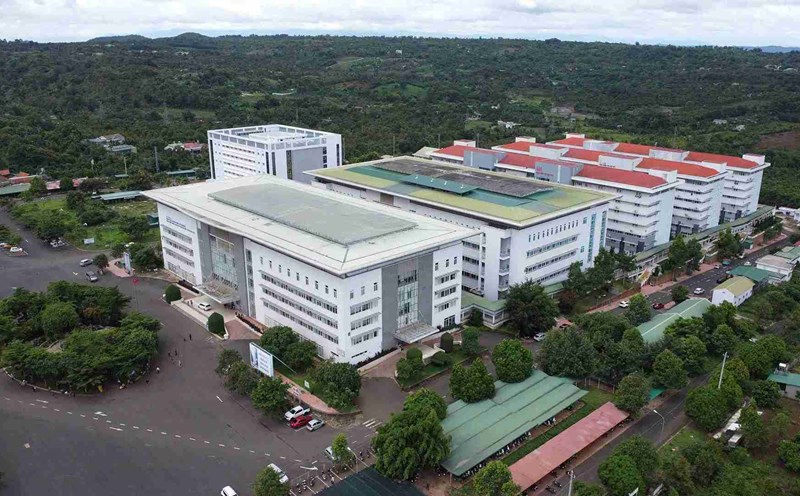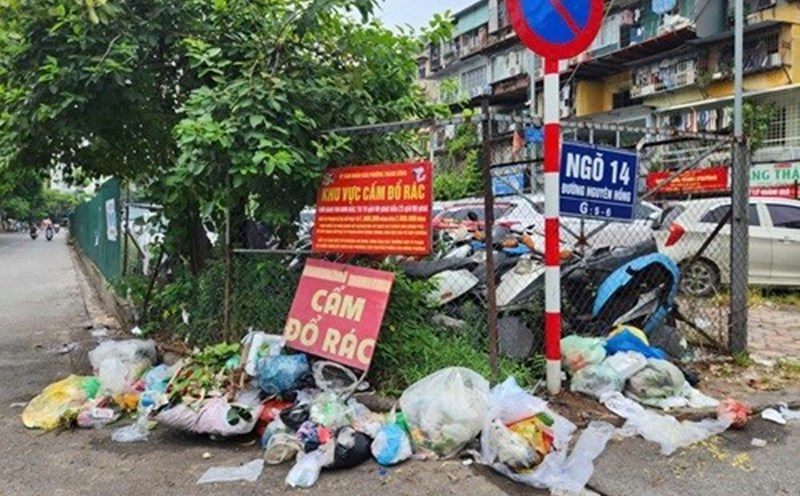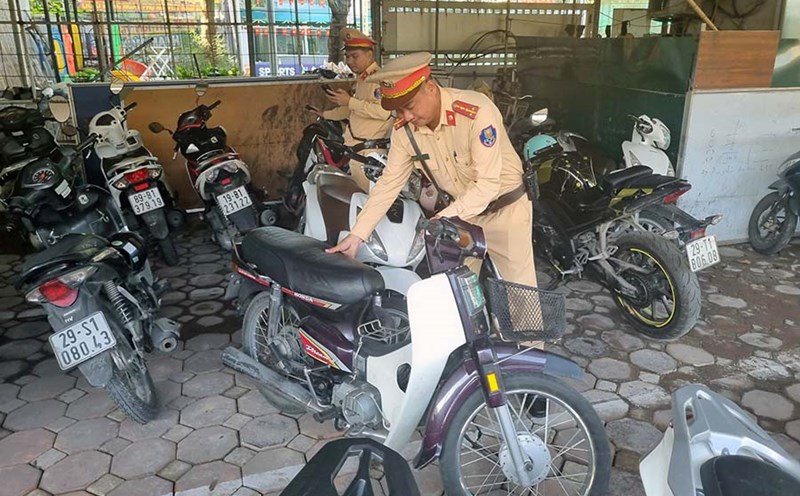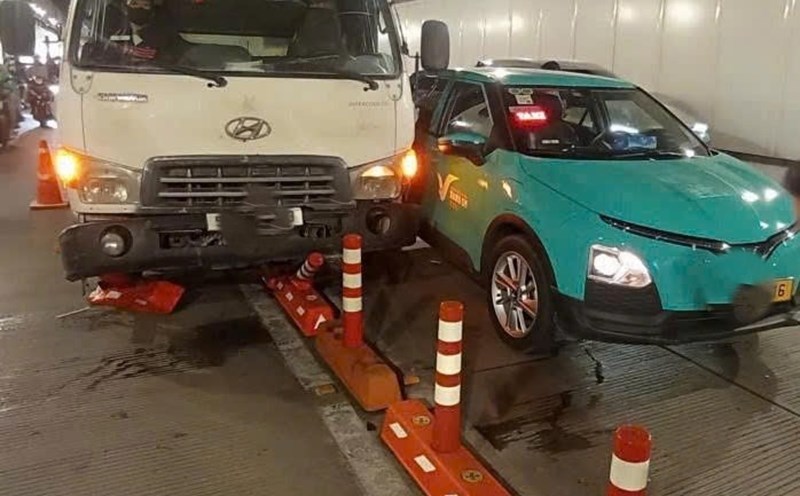Big city, heavily polluted
Over the years, Hanoi and Ho Chi Minh City have often been in the group of urban areas with worrying air quality. According to Dr. Hoang Duong Tung - Chairman of the Vietnam Clean Air Network (SVCAP), PM2.5 fine dust levels in many inner-city areas of these two cities are always high and tend to increase. The causes of pollution have been clearly identified: Emissions from vehicles using fossil fuels, dust arising from construction activities, emissions from production facilities outside the inner city using coal, as well as waste burning, straw burning outside the city.
The most difficult point in handling air pollution is the different physiological and chemical properties. Air pollution is not easy to observe like wastewater or solid waste, but exists in primary and secondary forms, greatly affected by meteorological conditions. In particular, it is impossible to have " surrounding air treatment plants", all solutions must focus on controlling emissions right at the source.
The harmful effects of air pollution are serious. According to international studies, this is the fourth leading cause of premature death globally. However, the impacts are often slow and difficult to feel in the short term, making propaganda work and changing community behavior even more challenging. In Hanoi, motorbikes alone have created nearly 7 million "mobile smoke drinkers", while the source of emissions is scattered, making it difficult to "catch the face and name". Everyone is both a victim and a perpetrator.
Pollution monitoring and supervision is more complicated than other environmental areas. Many entities participate, the benefits - costs are dispersed, sometimes conflictive. Moreover, air pollution is also cross-border, beyond the scope of a single urban area. Therefore, handling this issue requires determination to persevere and coordination from many levels and sectors.
In both Hanoi and Ho Chi Minh City, public awareness of the harmful effects of air pollution has been significantly raised. National action plans and green transformation strategies affirm that we do not trade the environment for economic development. The problem has been clarified, the source of pollution has been identified, there is international experience, monitoring and treatment technology is increasingly developing. What is lacking is determination, synchronization and perseverance.
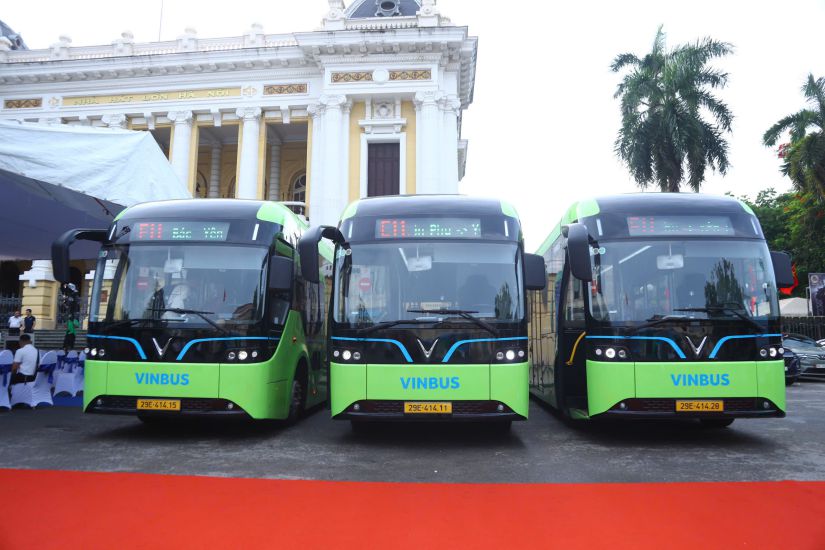
To make two major cities "locomotives"
Hanoi has clearly defined the goal of becoming a model of green transportation. In a recent meeting in early September, Vice Chairman of the City People's Committee Nguyen Manh Quyen chaired a meeting with departments and branches to review the progress of green transformation.
A report from the Department of Construction shows that the Ministry of Science and Technology has issued 23 national standards related to electric vehicle charging stations. However, there are currently no mandatory standards, expected to be announced in November 2025.
According to the Hanoi Department of Construction, the Hanoi Technical Infrastructure Center has surveyed 19 park and parking locations to install charging stations. The Traffic Management Center has determined that 3/5 transit points can arrange infrastructure for electric buses. Resettlement apartments, student dormitories, and social housing are also expected to have 81 charging stations for cars and 105 charging stations for motorbikes. Many businesses propose large-scale investment: e-commerce company requests to pilot 500 locations; V-Green company requests to install at 106 locations; Sai Dong Group proposes 1,040 locations in ecological urban areas.
Hanoi aims to complete the conversion of all buses and taxis to clean energy by 2030, and strive even earlier in 2029. In that spirit, Vice Chairman Nguyen Manh Quyen affirmed that he will immediately pilot charging stations in suitable locations, requiring investors to strictly comply with fire prevention and technical safety standards.
Meanwhile, Ho Chi Minh City is shaping a long-term strategy, considering electricity transport as a spearhead to achieve the goal of net zero emissions by 2050. Sharing at the recent seminar: "Joining hands to protect the green sky - challenges and solutions", Associate Professor, Dr. Dam Hoang Phuc - Hanoi University of Science and Technology - informed that according to research, Ho Chi Minh City has developed an electricity transport action plan with a high intervention scenario. By 2030, greenhouse gas emissions will decrease by 866,000 tons of CO2 equivalent; by 2050, the reduction will be 11.889 million tons.
A series of strong measures will be applied: Increase registration fees, center admission fees and pollution fees; stop registering new diesel cars before 2030, vehicles using fossil fuels before 2035, internal combustion engines before 2040; internal combustion motorbikes stop registering newly before 2040. For taxis and buses, the route is even faster, stopping diesel bus registration from 2025, and buses using fossil fuels from 2030. At the same time, the incentive program to switch to electric buses will be piloted in the period of 2025 - 2030.
Regarding infrastructure, Ho Chi Minh City plans to issue a unified charging standard set in 2025, with an average growth of 22,2% of charging stations per year.
Obviously, both Hanoi and Ho Chi Minh City have taken drastic steps towards the green urban model. In this process, the two major cities not only solve environmental problems for themselves but also play a leading role in the country. Because if the two largest socio-economic centers in the country succeed in green transformation, it will be a strong push for other localities to act together.



